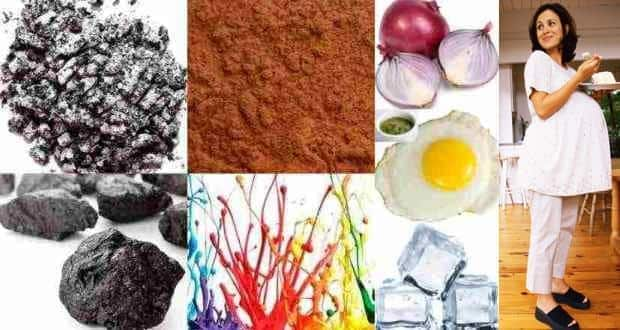
Those who reported pica behavior more commonly had a relative who also practiced pica. Increased research efforts are warranted and must be hypothesis driven, interdisciplinary, and permit the testing of multiple causal inferences. Results: The prevalence of pica during pregnancy was 44 (n 33) in the Ensenada group and 31 (n 46) in the southern California group. may render micronutrients in ingesta unavailable for absorption. It is possible that the binding capacity of pica substances explains the association with micronutrient deficiencies earth, starch, etc. Pica is more common in pregnant women because your body has increased nutritional needs during pregnancy. It may be a sign of inadequate nutritional intake.

Currently available data, although limited, best support the protection hypothesis as a cause of most types of pica, although some evidence suggests that pagophagy (ice consumption) may occur during iron deficiency. Pica happens when you get unusual cravings to eat things that aren't food, such as ice or clay. Items such as starch that provide calories may result in exces- sive weight gain. Multiple proposed etiologies of pica are reviewed, including cultural expectations, psychological stress, hunger, dyspepsia, micronutrient deficiencies (Fe, Zn, and Ca), and protection against toxins and pathogens. Abstract: A case of occult lead poisoning during pregnancy resultant from ingestion of shards of Mexican pottery is presented. Nutritious food may be displaced by pica substances. Its worldwide ubiquity, prevalence among pregnant women and children, and association with both positive and negative health outcomes, especially micronutrient deficiencies, underscore the importance of understanding this behavior. It is generally classified as an eating disorder if one eats non-food items for more than one month. We conclude that the behavior is more prevalent than commonly believed, shows no sign of further decline, and may have serious effects, particularly anemia, on mother and infant.Pica, the purposive consumption of nonfood substances, is a millennia-old nutritional enigma. Pica, which comes from the Latin word for magpie (a bird known for eating almost anything), is a worldwide phenomenon most commonly seen in children but can occur for some people during pregnancy. Pica also has been associated with maternal and perinatal mortality. The evidence suggests that pica during pregnancy results in anemia, but it is not definitive. Pica can affect children, adolescents, and adults of any genders. The clinical picture of the disorder during pregnancy is not well described. Women at high risk of pica are more likely to be black, to live in rural areas, and to have a positive childhood and family history of pica. The prevalence of pica among pregnant women in high-risk groups declined between the 1950s and the 1970s but now remains steady, affecting about one fifth of high-risk women. Data on pica practices by pregnant women are limited and inconclusive but reveal several interesting relationships. In a meta-analysis assessing the worldwide prevalence of pica during pregnancy and the postpartum period, the mean prevalence during pregnancy was much. Pica behavior was considered in terms of its prevalence, risk factors, clinical profile, and effect on pregnancy outcome. This report summarizes current knowledge about pica practices during pregnancy through a systematic review of the literature for the period 1950 through 1990. While many people are born naturally with the disorder, pica symptoms can also begin to present themselves during the first trimester of pregnancy. Dietetic practitioners who counsel pregnant women should ask questions about pica when they conduct nutrition assessments of their clients We conclude that the behavior is more prevalent than commonly believed, shows no sign of further decline, and may have serious effects, particularly anemia, on mother and infant. pregnancy, and a disorganized family structure are risk factors for pica. The evidence suggests that pica during pregnancy results in anemia, but it is not definitive. Pica is the eating or craving of things that are not food.


Data on pica practices by pregnant women are limited and inconclusive but reveal several interesting relationships.

This report summarizes current knowledge about pica practices during pregnancy through a systematic review of the literature for the period 1950 through 1990.


 0 kommentar(er)
0 kommentar(er)
